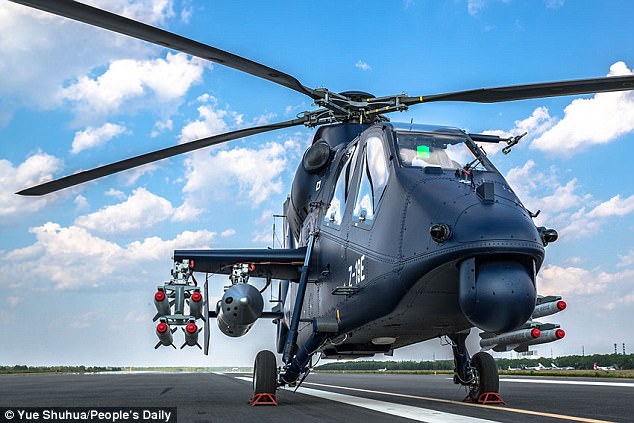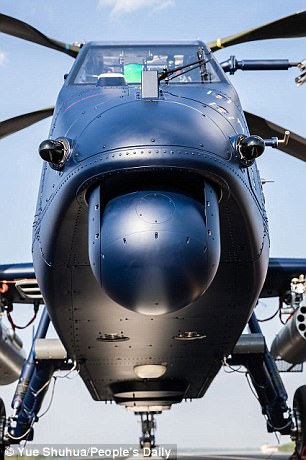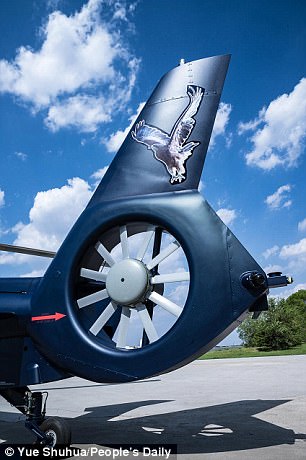Guderian
Kapteeni
Kiina uuden ryhmittää Maavoimansa.
3 Armejaryhmää Itään, 2 etelään 2 länteen, 3 pohjoiseen ja 3 keskelle.
Lisäksi entisestä 15.
Maahanlaskuarmeijasta tulee 84. Maahanlasku armejaryhmä ja siinä olisi "airborne assault group" joka olisi kuin U.S. 101st Airborne Division.
En tiedä onko käännöksessä vika vai toimittajissa mutta ensimmäinen lainaus puhuu armeijaryhmästä "armygroup" ja toinen armeijakunnasta "Armycorps".
Luotan viralliseen eli ensimmäiseen.
China to regroup PLA Army
In-Depth Coverage
People's Daily Online
(Xinhua) 19:38, April 27, 2017
BEIJING, April 27 (Xinhua) -- The Central Military Commission has decided to reorganize the army groups of the People's Liberation Army (PLA) Army, Defense Ministry spokesperson Yang Yujun said Thursday.
Yang said that 13 army groups will be formed from the previous 18.
http://en.people.cn/n3/2017/0427/c90000-9208668.html
Ja analyysi tästä.
3 Armejaryhmää Itään, 2 etelään 2 länteen, 3 pohjoiseen ja 3 keskelle.
Lisäksi entisestä 15.
Maahanlaskuarmeijasta tulee 84. Maahanlasku armejaryhmä ja siinä olisi "airborne assault group" joka olisi kuin U.S. 101st Airborne Division.
En tiedä onko käännöksessä vika vai toimittajissa mutta ensimmäinen lainaus puhuu armeijaryhmästä "armygroup" ja toinen armeijakunnasta "Armycorps".
Luotan viralliseen eli ensimmäiseen.
China to regroup PLA Army
In-Depth Coverage
People's Daily Online
(Xinhua) 19:38, April 27, 2017
BEIJING, April 27 (Xinhua) -- The Central Military Commission has decided to reorganize the army groups of the People's Liberation Army (PLA) Army, Defense Ministry spokesperson Yang Yujun said Thursday.
Yang said that 13 army groups will be formed from the previous 18.
http://en.people.cn/n3/2017/0427/c90000-9208668.html
Ja analyysi tästä.
2017/04/24 14:34:30
Hong Kong, April 24 (CNA) Mainland China's 18 army corps have been reorganized into 13 army corps, according to a military expert in Hong Kong.
The expert, Leung Kwok-leung (梁國樑), told a CNA reporter on Monday that the 13 new army corps of the People's Liberation Army (PLA) will also use new numeric designations that start from 71.
He said the PLA has had 70 army corps in its history and the new numbers are simply an extension of that tradition.
Leung also said, according to his information, the new 71st, 72nd and 73rd army corps will come under the Eastern Theater Command; the 74th and 75th under the Southern Theater Command; the 76th and 77th corps under the Western Theater Command.
Three each of the six remaining army corps fall under the Northern Theater Command and the Central Theater Command.
He also quoted sources as revealing that the PLA's 15th airborne army is likely to be upgraded as the new 84th Airborne Army Corps, an indication that mainland China is trying to improve its airborne forces.
Leung expects the new 84th Airborne Army Corps to include an airborne assault group similar to that of the U.S. 101st Airborne Division.
Meanwhile, a military website run by Beijing's Global Times reported today that the new vice head of the 76th Army Corps visited a commemoration of the Red Army in Gansu days ago.
This was the first time the name of the new 76th Army Corps has been officially mentioned.
(By Stanley Cheung)
http://www.globalsecurity.org/wmd/l...424-cna01.htm?_m=3n.002a.1998.qa0ao069zz.1u73
Viimeksi muokattu:




